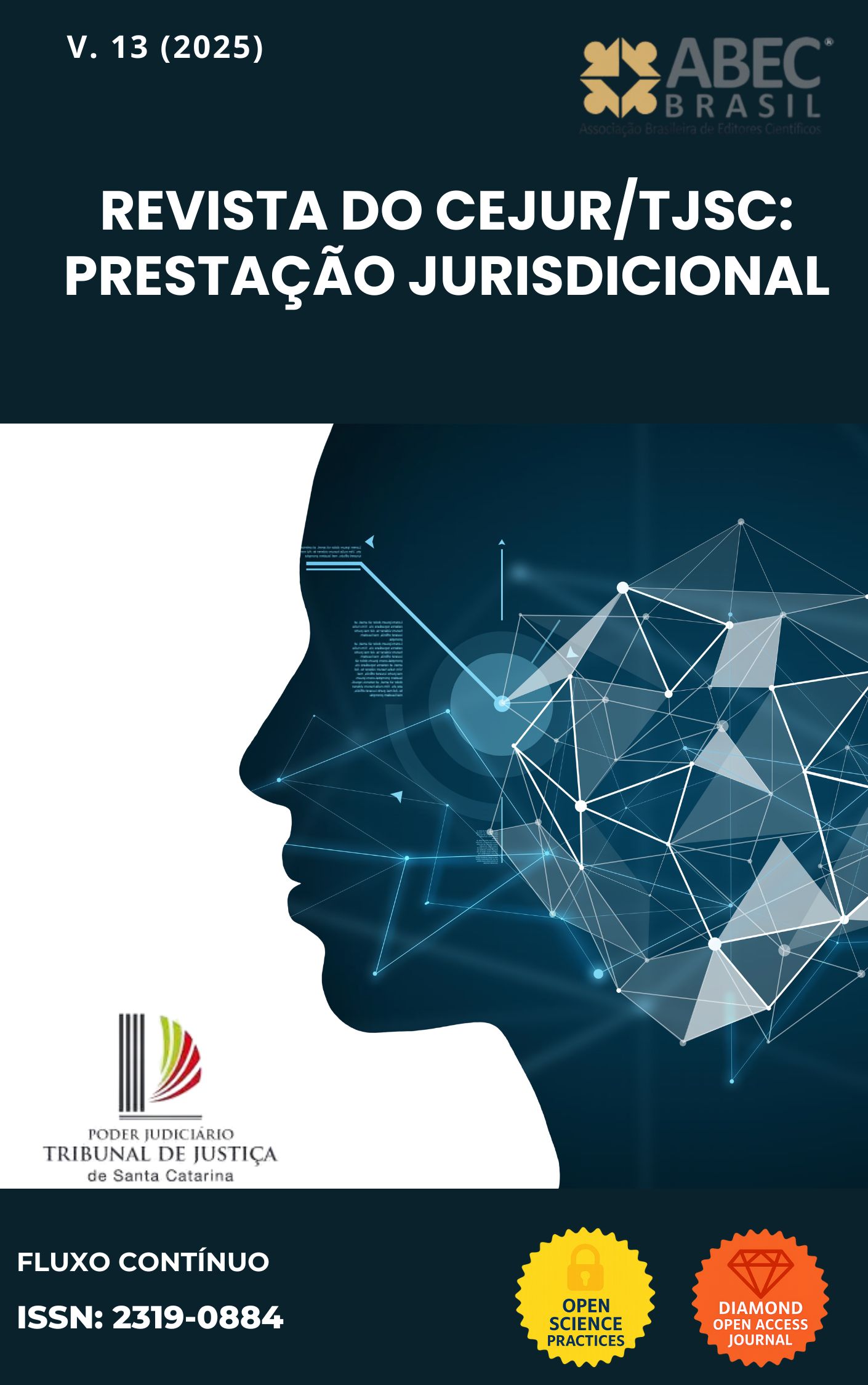Abstract
The Brazilian Judiciary has long been seeking efficient ways to streamline the provision of legal services to society. However, in order to evolve in terms of agility and efficiency, the Judiciary needs to innovate its traditional procedures. Localized technological solutions, however, do not support the necessary integration and security. It is necessary to combine operational-based technology, such as blockchain, with generative Artificial Intelligence. In this paper, we demonstrate the validity of its use, through the main benefits of its adoption: increased productivity, lower operating costs, and benefits to society. Three functional premises are demonstrated, supporting the technological massification with blockchain and AI, as a solution for speed, procedural security, quality, and positive implications for social pacification.
References
ALVIM, Teresa Arruda; CONCEIÇÃO, Maria Lúcia Lins; RIBEIRO, Leonardo Ferres da Silva; MELLO, Rogerio Licastro Torres. Código de Processo Civil – Artigo por artigo. São Paulo: Revista dos Tribunais – Thomson Reuters, 2020.
BRASIL, 2023. Conselho Nacional de Justiça - CNJ. Justiça em Números, 2023. Relatório Anual.
Brasília, 2023. Disponível em https://www.cnj.jus.br/wp-content/uploads/2023/08/justica-em-numeros-2023.pdf Acesso em 24.03.2025.
BUTERIN, Vitalik. Control as Liability, 09 de maio de 2019. Disponível em https://vitalik.eth.limo/general/2019/05/09/control_as_liability.html Acesso em 20.05.2025.
CAMPOS, E. L. C. O princípio da eficiência no processo civil brasileiro. Dissertação de Mestrado. Programa Pós-Graduação em Direito. Universidade Federal de Pernambuco, Recife. 173 f., 2017.
CHESBROUGH, H. W. The Era of Open Innovation. MIT Sloan Management Review, Cambridge, 15 abr. 2003. Disponível em https://sloanreview.mit.edu/article/the-era-of-open-innovation/ . Acesso em 23.02.2025.
_____________. Open Business Models. Cambridge (MA): Harvard Business School Press. 2006.
_____________. Inovação Aberta: como criar e lucrar com a tecnologia. Porto Alegre: Bookman, 2011.
CHRISTENSEN, C.M. The Innovator’s Dilemma. Cambridge (MA): Harvard Business School Press, 1997.
GOODFELOW, I.; BENGIO, Y.; COURVILLE, A. Deep Learning. Cambridge (MA): MIT Press, 2016.
KLEROS. The Justice Protocol. Plataforma descentralizada de Arbitragens. Disponível em https://kleros.io/ Acesso em 06.04. 2025.
HENDERSON, R.M. & CLARK, K.B. Architectural Innovation: The Reconfiguration of Existing Product Technologies and the Failure of Established Firms. Administrative Science Quarterly, v. 35, n.1, p. 9 – 30, 1990.
MARDINI (Mardini.com). O Pai da Inteligência Artificial: Conheça John MacCarthy e seu Legado no Marketing Digital, 2011. Disponível em: https://mardini.com.br/conheca-john-mccarthy-e-seu-legado-no-marketing-digital Acesso em 29.04.2025.
MARINONI, L. G.; ARENHART, S.C.; MITIDIERO, D. Código de Processo Civil. São Paulo: Revista dos Tribunais - Thomson Reutters, 2024.
MATTEREUM. Mattereum Homepage. Plataforma de transações internacionais. Disponível em https://mattereum.com/ Acesso em 06.04.2025.
MIT-TR. O que Vem aí para os Supercomputadores mais Rápidos do Mundo. MIT Technology Review, 2023. Disponível em: https://mittechreview.com.br/o-que-vem-por-ai-para-os-supercomputadores-mais-rapidos-do-mundo/ Acesso em: 16/04/2024.
OpenAI. Large Language Generative Pre-Trained Transformer. OpenAI-GPT-2, 2023. Disponível em:
https://github.com/openai/gpt-2 Acesso em 18.05.2025.
OSLO. Manual de Oslo: Diretrizes para Coleta e Interpretação de Dados sobre Inovação. 3ª ed. Rio de Janeiro: OCDE/FINEP, 2005.
PONCIANO, V. L. F. O Controle da Morosidade do Judiciário: Eficiência Só Não Basta. Disponível em: https://www.tre-pr.jus.br/institucional/escola-judiciaria-eleitoral/artigos/o-controle-da-morosidade-do-judiciario-eficiencia-so-nao-basta . Acessado em 04/05/2024.
RUSSELL, S.; NORVIG, P. Inteligência Artificial – Uma Abordagem Moderna. Barueri (SP): Editora GEN LTC, 2022.
SEGARS, A. Seven Technologies Remaking the World. MIT Sloan Management Review. Março de 2018. 17p.
Startse. Blackwell: Conheça o poderoso chip de IA lançado pela Nvidia. Disponível em: https://www.startse.com/artigos/blackwell-conheca-o-poderoso-chip-de-ia-lancado-pela-nvidia/ Acesso em 22.04.2025.
SPADINI, A. S. GPT 3 e GPT-4: O que é, diferenças e como a IA pode te ajudar (2023). Disponível em: https://www.alura.com.br/artigos/o-que-e-gpt-3-gpt-4 Acesso em 25.04.2024.
STF – Supremo Tribunal Federal. (2023). STF Finaliza Teste de nova Ferramenta de Inteligência Artificial. Brasília. 11/05/2023. Disponível em: Supremo Tribunal Federal (stf.jus.br). Acesso em: 28 março 2024.
STF – Supremo Tribunal Federal. (2021). Projeto Victor avança em pesquisa e desenvolvimento para identificação dos temas de repercussão geral. Disponível em: Supremo Tribunal Federal (stf.jus.br) Acesso em 28 março 2025.
VAN VEEN, F. (2016). The Neural Network Zoo. Disponível em: https://www.asimovinstitute.org/neural-network-zoo/ Acesso em: 28 de março de 2025.

This work is licensed under a Creative Commons Attribution-NonCommercial 4.0 International License.
Copyright (c) 2025 Leonel Cezar Rodrigues





